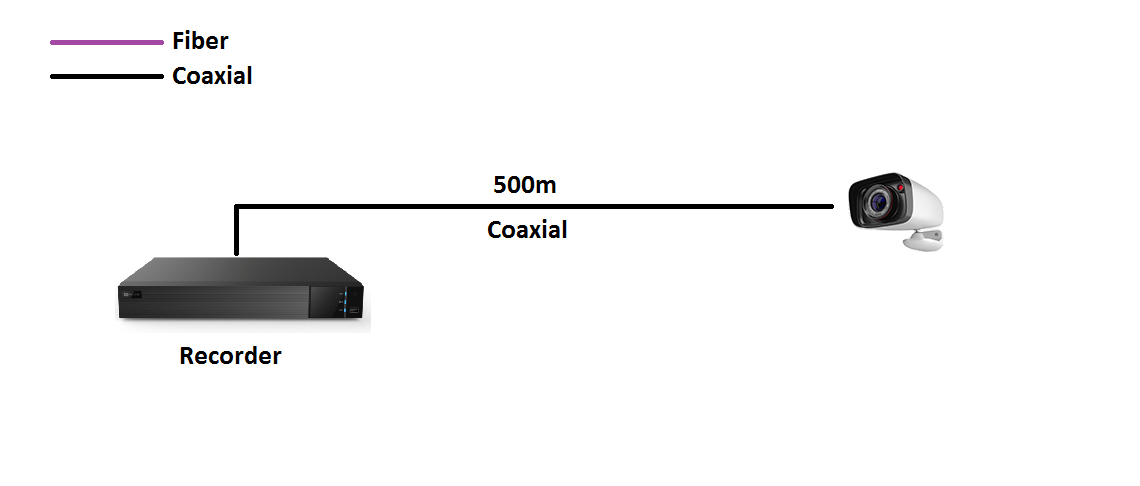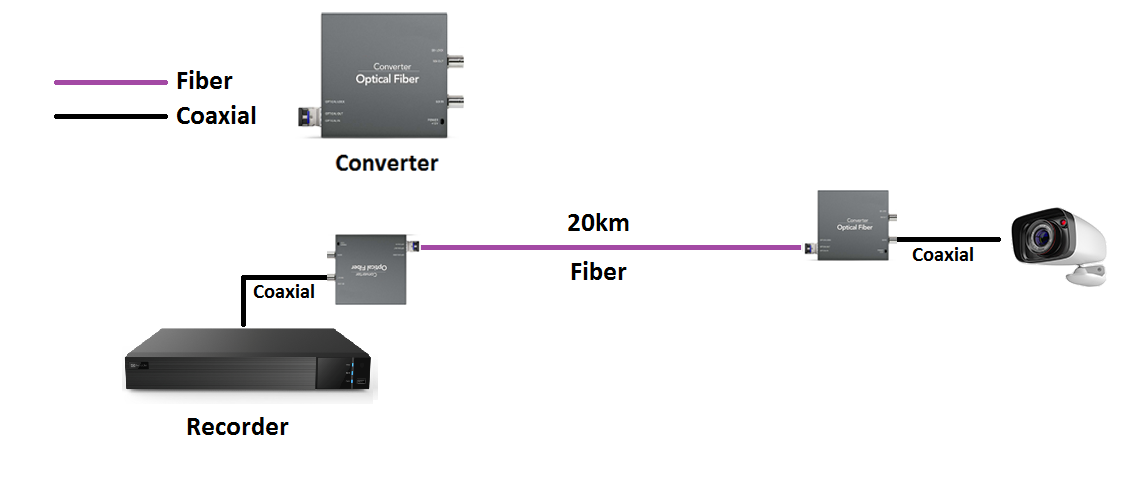① When the area is large, cabling is more than 300m – 500m
② When the site needs more than 30 cameras, due to cost-effectiveness
③ When the site will have future expansion
Fiber Optic sounds very high-tech, right? Actually, laying fiber cable is not that expensive but there is an additional cost for the fiber accessories, Fiber to Coaxial Converter. A pair of converter for the back end and front end of the system, because there is no fiber camera or recorder. Camera and recorder only come with BNC or Ethernet interface, BNC port for the analog camera using coaxial cable (also called RG cable), Ethernet port for the network camera using Ethernet cable (also called UTP cable, LAN cable, Cat5 or Cat6 cable). This is why we need a converter for each of the equipment when applying fiber solutions. The greater costs of fiber solutions come from the converter and workmanship because constructing a fiber system needs very detail handwork and involved many expensive tools.
Usual Method

No converter needed
Fiber Optic Method

Fiber to Coaxial converter needed
① Better-quality transmission, distance up to 20 km
② Huge bandwidth capability
③ Interference immunity such as electrical and electromagnetic interference
④ Avoid lightning surges and overvoltage
⑤ Smaller size and lightweight, neat cabling
⑥ Long service life, not easily oxidized compared to copper
As we know that raining is very common in Malaysia, especially during raining season. A huge benefit of Fiber Solutions is no more lightning surge can severely damage the system because fiber is made of glass not copper, it is non-conductive. The distant a fiber can transmit is up to 20km, it is more than enough for a large property or even a neighbourhood.
Fiber Optic = Optical Fiber
Fiber Cable = Optical Cable

 Malaysia
Malaysia